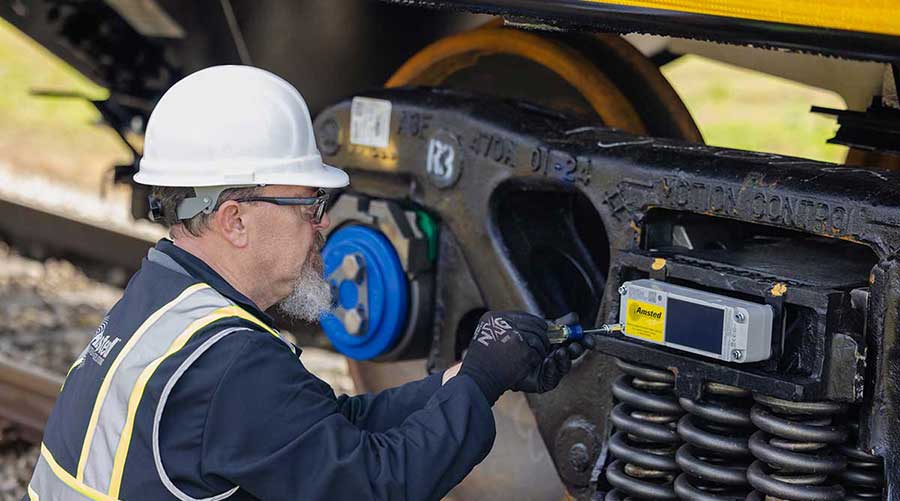Stay updated on news, articles and information for the rail industry
December 2008
Part 1 : INTRO: '09 Outlook: Rail & Reconstruction
Part 2 : PART 1: Class Is Like Their Chances of Posting Revenue Gains & Easing Cost Pains in '09
Part 3 : PART 2: For Short Lines, Top-Line Growth is an '09 Goal
Rail News: Rail Industry TrendsINTRO: '09 Outlook: Rail & Reconstruction
By Pat Foran, Editor
With certainty comes a bit of closure, perhaps. We’ve been in a recession for a year, the National Bureau of Economic Research reported on Dec. 1. Researchers offered no definitive declarations regarding how long this recessionary darkness will linger, but it’ll almost certainly (now that’s definitive) get darker before it gets lighter ... if it lightens at all in 2009.
Of course, there’s not knowing and there’s not knowing. In the rail realm, what’s clear is this: Whatever the economic weather, the steel-wheels-on-steel-rail solution to what ails the North American transportation system continues to look a lot better to a lot more people, including some of the new-breed leaders preparing to make their voices heard in Washington.
Not that dark clouds don’t dot the ’09 horizon. Freight railroads will cut back on capital spending as they gear up for another flat (if they’re lucky) traffic year. Transit-rail agencies will struggle to remain on a ridership roll while they confront enormous funding challenges. They’ll both need time to find their footing in the post-financial-market-bailout economy. But they won’t bail on a bigger-picture goal: to do their part to ensure that rail transportation plays a constructive role in this era of economic reconstruction.
“I am excited about our prospects of positioning this industry as part of the answer,” says Association of American Railroads President and Chief Executive Officer Ed Hamberger. “As the country tries to determine how we reduce our carbon footprint, and how we save energy — how we keep American jobs — there’s more and more of a recognition that rail is necessary. That rail is cost-effective. That rail works.”
That’s freight and passenger rail both.
“At a time when America must create more jobs, reduce its dependence on foreign oil and become more carbon efficient, public transportation can make a significant contribution quickly and cost effectively,” says American Public Transportation Association President Bill Millar, who with AAR’s Hamberger and other rail leaders met last month to talk turkey with members of President-Elect Barack Obama’s transportation transition team.
So: It may be dark and getting darker out there, but railroaders still see the light. For a bit more on what Class I CEOs see, click here; for a sense of what transit-rail execs are thinking, click here.


 LRW Honors Amtrak’s Acheson As Railway Woman Of The Year
LRW Honors Amtrak’s Acheson As Railway Woman Of The Year
 From Editor-In-Chief Foran: Of Gender Equity And Inclusion
From Editor-In-Chief Foran: Of Gender Equity And Inclusion
 Spotlight On Some Of Today’s Rail Safety Products
Spotlight On Some Of Today’s Rail Safety Products
 Women of Influence in Rail eBook
Women of Influence in Rail eBook
 railPrime
railPrime







